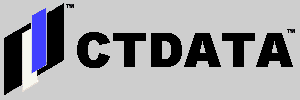NewsForge is the Latest Site to Criticize WAP
Jack Bryar wrote an original piece for NewsForge that reviews the current state of the Wireless Access Protocol (also known as WAP). The article is not as critical of the underlying technology as it is of the applications that have been built up to now.
From the outset, we have questioned the entire premise of WAP, so long as the devices used to access it look like mobile telephones. If you have a tiny display with no color or contrast, and no practical data entry device, who's going to use it? We prefer the form factor and usability of the Research In Motion Blackberry pagers.
We are not alone in our analysis. We have previously documented the fact that analysts like Stewart Alsop and Jakob Nielsen have found WAP wanting.
One question we have about the Newsforge analysis: why is Jack Bryar so tentative at the beginning of the article? He says:
If the pessimism in the "new technology" sector wasn't bad enough already, doubters about wireless Internet services are starting to come out of the woodwork. And some of them are blaming it all on the Open Source phenomenon.
We understand that the Open Source angle has to be present in order to justify its publication on NewsForge, but we question any assertion that cites Open Source content management or content delivery tools as a significant hinderance to the market acceptance of WAP. It's not the license that the technology is distributed under, it's what has been built with that technology that is the chief problem.
The same factors apply when it comes to evaluating businesses. Companies that develop Open Source software are not in trouble because Open Source is a bad idea. They are in trouble because they don't sell any products or services that command a premium in the market. How can you give your product away, and attempt to sell no add-ons, allied products, or services? Even religious institutions request donations, and offer valuable services like day care and private schooling to cover ministerial costs.
Investors have finally realized that companies with no realistic hope of making a profit are generally bad investments. The market is only willing to accept operating losses if the future business opportunity is very special.
This is a big switch in sentiment from the first quarter of 2000 and the two or three preceding quarters. At that time, investors equated large losses with major investments in "the future". A few market followers saw this as madness, but they were ignored.
We can safely say that a similar reality distortion factor was temporarily present in the market's appraisal of WAP. Performance and usability were small details that would be overcome quickly and easily. This was a critical miscalculation.
About six months ago, a client asked if we saw long term problems with the WAP protocol. At that time, we pointed out that WAP appeared to be designed with the assumption that the display form factor would remain small and the bandwidth available to wireless users would limit the amount of data a user could receive and assimilate for the foreseeable future. We thought that G3 and other high bandwidth wireless technologies would be implemented quickly, and this would further undermine the WAP market.
We now believe that the high bandwidth services will not be deployed quickly, due to lack good applications for wireless Internet access. Applications will continue to be poor as long as the usability of the devices remains an issue.
After all, have you tried to use Yahoo! Mobile services lately? They are great if you want to be notified whenever your favorite NFL team scores. But, beyond that, what's the point?
Far better prospects exist, at least in the short term, for services like Tellme. Then again, we already told you.
